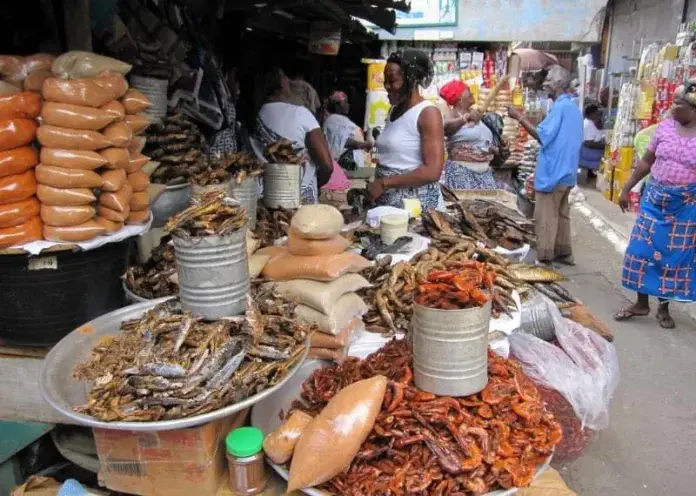Copyright ghanamma

October 2025 delivered encouraging news for Ghana’s economy as headline inflation eased to 8.0 percent from September’s 9.4 percent, marking the lowest rate in four years. Month on month, prices fell by 0.4 percent, signaling that overall costs actually declined between September and October. This represented the tenth consecutive monthly drop in inflation since December 2024 when the rate stood at 23.8 percent. However, not all household essentials followed this downward trend. While the broader economy showed signs of easing price pressures, several key food staples that form the backbone of Ghanaian meals continued pushing upward, placing strain on family budgets despite the overall improvement. The Ghana Statistical Service (GSS) identified green plantain, tomato paste, cassava products including kokonte dough, bread, and resold tap water among the top 20 items influencing price changes during October. These items appeared on the list alongside smoked herrings, cooked rice, vegetable oil, ginger, and charcoal as significant contributors to the month’s inflation figures. Government Statistician Dr. Alhassan Iddrisu explained that locally produced goods remained costlier than imports throughout October, with most inflation drivers coming from domestic food products. The data showed that items without standard packaging, such as cassava and plantain, experienced substantial price variations across regions due to transportation costs, supply chain disruptions, and seasonal factors. For the broader inflation picture, food and non-alcoholic beverages, which account for 42.7 percent of the typical consumer basket, saw year on year inflation drop to 9.5 percent from 11.0 percent in September. Non-food inflation declined to 6.9 percent from 8.2 percent over the same period. The transport sector recorded deflation of 4.0 percent, reflecting relatively stable fuel prices and improved cost conditions. Housing, water, electricity, gas and other fuels contributed 17.6 percent to overall inflation, followed by clothing and footwear at 9.4 percent, recreation, sport and culture at 6.6 percent, and alcoholic beverages, tobacco and narcotics at 5.0 percent. Month on month, services recorded a slight increase of 0.54 percent, while goods prices fell by 0.7 percent. This divergence indicated that while physical products became more affordable, costs for services from transport to personal care remained relatively firm. Regional variations showed wide disparities in inflation experiences. The North East Region recorded the highest rate at 17.3 percent, though down from 20.1 percent in September, while Bono East Region posted the lowest at just 1.1 percent. These differences reflected varying levels of food production, market access, and transportation costs across the country. Dr. Iddrisu described the continued decline as an important development that demonstrates Ghana’s disinflation process remains on course, with price stability gradually returning. The achievement marks the first time since June 2021 that the country has reached single digit inflation, bringing the rate within the Bank of Ghana’s medium term target band of 8 percent plus or minus 2 percentage points. The sustained improvement stems from ongoing fiscal and monetary measures aimed at stabilizing the economy, strengthened exchange rates, and improved food supply conditions. However, the persistence of higher prices for essential food items underscores that even during broad based economic improvements, specific household staples can move independently, creating uneven impacts on different families. For households navigating this mixed picture, the overall inflation decline provides relief on many fronts while certain kitchen staples continue demanding careful budget management.



